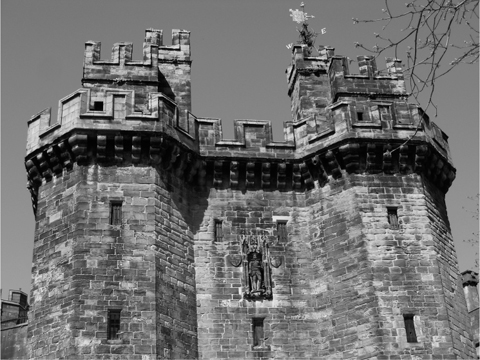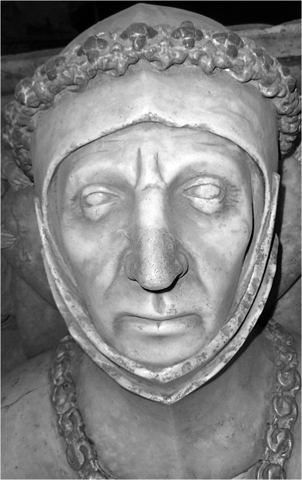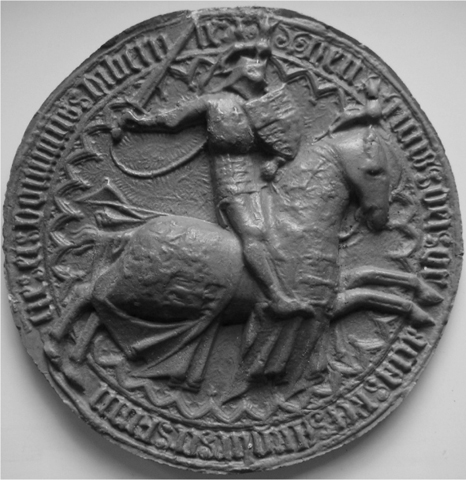Henry IV (2 page)
Authors: Chris Given-Wilson

3 The Lichtenthal Psalter, Lichtenthal Abbey, Baden-Baden, commissioned by Henry&s mother-in-law Joan, countess of Hereford, to celebrate his marriage to Mary de Bohun in February 1381. This is the opening to Psalm 1. The arms of Lancaster and Bohun in the left margin are linked by tendrils to symbolize their union.

4 Pontefract castle, West Yorkshire: the remains of the Gascoigne Tower, where Richard II was imprisoned following his deposition in 1399, and where he died in February 1400, probably on Henry&s orders.

5 Warkworth castle, Northumberland: the keep, built by the earl of Northumberland at the end of the fourteenth century. Henry IV besieged it in July 1405, when ‘seven shots’ from the king&s cannon forced the captain to surrender it.

6 Lancastrian livery collar of linked
SS
, silver, fifteenth century. The
SS
collar was the chief livery badge of the Lancastrian dynasty, and hundreds were worn by its supporters both before and after 1399.

7 Sycharth, Powys: the mound beyond the farmhouse was the site of Owain Glyn Dwr&s moated mansion, ‘utterly destroyed’ in a raid led by Prince Henry in May 1403.

8 The royal surgeon John Bradmore&s description of his ‘cura domine principis wallie’ (cure of the lord prince of Wales) and his drawing (centre right) of the instrument he designed to extract from Prince Henry&s face an arrow-head which, he said, had penetrated ‘the bone of the skull for the depth of six inches’ at the battle of Shrewsbury in July 1403.

9a Lancaster castle: the gatehouse, statue of John of Gaunt flanked by shields of the arms of Henry IV and Henry V as prince of Wales, erected by Henry IV as a monument to Lancastrian dynastic power.

9b Lancaster castle: the gatehouse, construction of which was begun on Henry IV&s orders in 1399 and completed under Henry V.

10 ‘Saint’ Richard Scrope, archbishop of York, executed by Henry for treason in June 1405, holding the windmill under which he was beheaded. The popularity of his martyr-cult obliged the king to forbid access to his tomb within a few months of his death.

11 King James I of Scotland (1406–37), captured in the North Sea in March 1406, remained a prisoner of the English until 1424. This sixteenth-century anonymous oil painting on panel in the Scottish National Portrait Gallery is said to have been based on a fifteenth-century original.

12 Thomas, duke of Clarence, second son of Henry IV, born 1387, died 1421, his tomb effigy with SS collar in Canterbury cathedral. Next to him lay the effigy of his wife, Margaret Holand, whom he married in 1412; on Margaret&s other side was the effigy of her first husband, John Beaufort, earl of Somerset (d.1410).

13a and b Second Great Seal of Henry IV (
c
.1406), (a) obverse. ‘Iconographically the finest great seal of the late middle ages in England’, it shows Henry in the centre of a perpendicular screen flanked by SS Michael, George, Edward and Edmund, and above him the Virgin and Child. It also incorporated the change in the French arms from France Ancient to France Modern and Prince Henry&s arms as prince of Wales, duke of Cornwall and earl of Chester.

